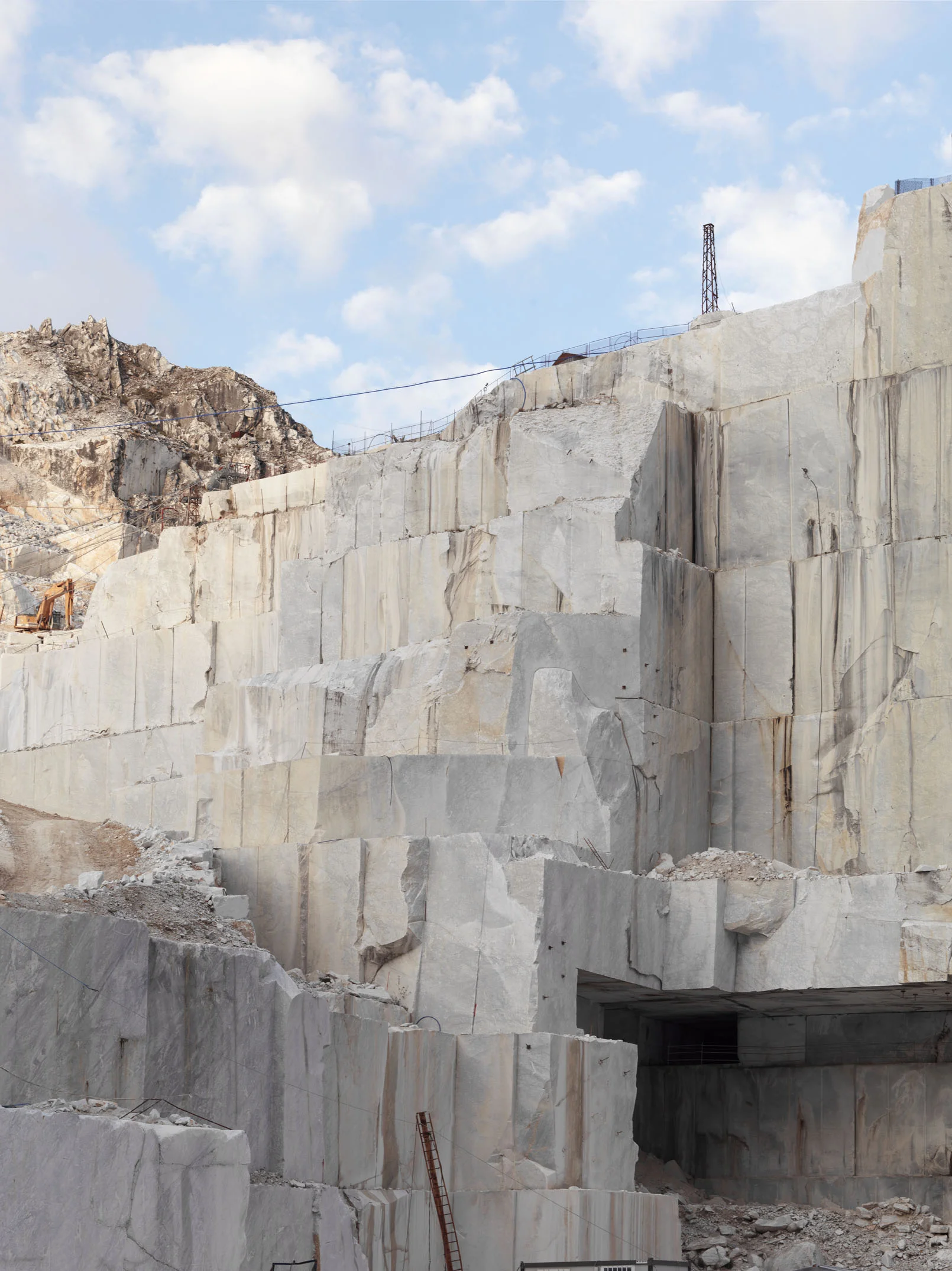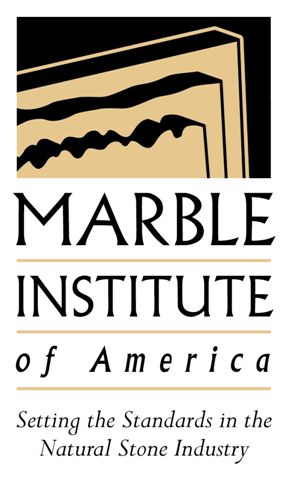The Carrara Marble Experience
/Carrara Marble Query
In collaboration with CarraraFiere and ICE-Italian Trade Agency
Terrific opportunity to be selected among leading figures in the natural stone and architecture field, being part of a talented group of architects and designers from around the world and to understand in depth a noble material like marble, starting from its ‘birth’ in the quarry to the finish product in our daily lives. Experiencing as well stunning art, sculptures, and design at the ‘Carrara Marble Weeks in town’ to interpret and contemplate a different aspect of the Carrara Marble.
“A visit with added value – was the comment of Valerio Soldani, head of the Building, Architecture, Design office at the ICE Roma – of great training value even for real experts who, precisely because they know the complexity of the sector, always want to acquire new knowledge, while the professionals with less expertise were simply fascinated.” Mr. Soldani words clearly summarize what the Carrara Marble Experience has been for us at Antony Architectural Stone, despite our expertise in the field, we have seen and learned something new also this time and that is what we value and bring back to USA with us.
Four days of intense practical education on the brand Carrara Marble. We started with the visit at the quarries on an early rise going up with four by four trucks on a one way road toward the top of the mountain – experiencing stops at times since huge trucks were coming down with a block or two - the back view was stunning and the one in front was even better.
As we reached the top of the mountain, which is formed by 3 main channels and each of them distinguishes itself from the type of Carrara Marble it has, we were able to observe the surrounding natural vegetation and the blocks’ structure that formed the side of the road. Once at the top – no words could explain what we were seeing – just unbelievable!
WHITE CARRARA MARBLE BLOCK EXTRACTION
Andrea Rossi administrator of Marmi Carrara group – one of the owner of the quarry – kindly explained to us how, many years ago, since there were no roads available, the blocks were dropped down by ropes with wooden rollers beneath, loaded and transported on wagon by oxen and cows down to the valley.
While reaching the central part of the mountain, we had the chance to see a scraper extracting a block that was previously cut with a diamond wire. Following, through a tunnel, we reached the center of the mountain, Cava Campanile and went down toward one of the main symbols of Carrara city, the Vara Bridges, and also the wheel with the emblem “Fortitudo mea in rota” which means “my strength is on the wheel.” Furthermore, we learned that the name Carrara comes from ‘Cararia’ which means the place of the wagons.
We saw many things and so many questions arose, but one thought communed most of us as architects and designers as to witness the great team work that happens in a quarry – everyone knows, supports and helps each other … ‘a large organization that acts just like one big family.’
Continuing with the visit of the local companies we were in direct contact with all the steps of marble and granite processing, from blocks into slabs and from slabs into a final cut to size product. Each company we visited, showed us a part of this complex process in detail. We learned about blocks cut into slabs at Il Fiorino Company, where manager Andrea Rossi illustrated to us gangsaws and a slab polishing machine. This was further discussed at Sagevan Group, where sales director Jacopo Vanelli explained to us a bit on block structure, veins and colors, to then focus on their new ‘bar codes’ photo view system of slabs to provide an efficient, and guaranteed service to their customers. Another aspect that Mr. Vanelli touched in his tour, was the new polishing line system that Sagevan has implemented – standard and new resins used depending on the need you have. A way, for example, to perfect the ‘tarolo’, a natural composition of the Carrara Marble, is by using a polyester resin activated by UV rays.
At the query....
It was fascinating to observe all the automated processing line with state of the art technology and to learn how for each material - cutting blades, polishing pads, machine pressure, bundles set up - change. All of this work is done by people with strong know-how and passion.
In fact, it was pointed out by Lorenzo Cabani – Bruno Lucchetti Marmi & Graniti Srl - during his tour of their granite resins set up system, along with learning about differences between granite and marble polishing line; how many of the steps in the processing of a final slab are dependent on accurate small conditions which are only known by the operator developed experience.
We took a break from natural stone when visiting Bencore. At Bencore Tito Franzini – manufacturing R&D – and Enrico Vene` - export sales manager, presented us their manufacturing facility and product line made up of polycarbonate structures with external layers in acrylic, offered in various finishes, color and sizes. An innovative product that has future potential.
As we moved into the development of a cut to size product, we had the opportunity to visit companies like Campolonghi and Savema S.p.a. At Campolonghi, Mirco Campagna showed us their custom processing machinery, and how work commissioned for large projects is prepared; while at Savema spa, Mario Perfetti presented us several custom cut to size products in ultimate preparation for some commercial projects. Also, we were able to see a 3-axis CNC machine customizing some marble pieces that is similar to the 5-axis CNC in our facility in Woodinville, WA, and visualized the work that is done and can still be completed with this advanced technology. It is an added value for Antony Architectural Stone’s sustainable manufacturing facility to have such state of the art technology, where we can provide a one of a kind and customized product to our customers.
Particularly, it was interesting to see how marble thin panels are produced. Silvio Losacco – responsible of stone projects at Furer S.p.a., illustrated to us how marble thin panels are constructed and assembled, presenting us as well the machinery that is used in this process and the materials that are used to achieve the final product. In addition, Patrizia Ricci from Franchi Group, exposed to us how different materials change their aspect when creating a cut to size piece, for example she showed us some marble slabs and their application into tubs, vases, benches and tables. This is something to always keep in mind when choosing a material.
Carrara Marble Thin Panels
At this point we really had the ability to envision marble and granite considerable work and the stunning and elegant design one can achieve using these materials.
During the stay, we had a good opportunity to interact and network with colleagues, exchanging ideas and visions for the future, sharing our thoughts on what we have seen, and how to apply marble and granite into future projects.
One evening Silvia Nerbi – Art Director of Carrara Marble Weeks – toured us on the fascinating artistic installations placed around Carrara historic center, where we viewed other aspects of this surprising city. I was particularly taken by a marble statue of the head of Jesus where, no matter where you were looking, it was looking back at you – a very interesting piece.
As keeping the best thing for last, we concluded our stay by attending the Expo Stone Award ceremony and the Round Table debate of Italian and American architects organized by the CarraraFiere and the National Council of Architects hosted at the Chamber of Commerce of Carrara. The debate focused on marble – discussing the uses of marble, its qualities and what it can offer not only to architects and designers but also to private customers. Having the opportunity to be present and listen to top architects in the world and recognize the Carrara Award receiving companies and projects was an incredible experience. It was interesting to listen to the debate and to hear the diverse points of view that the architects touched in their intervention. Nicole Dosso – architect at Skidmore, Owing, & Merrill office in New York – which received the award for contributing in the design and application of Carrara marble to the project of the One World Trade Center mentioned that “in this extraordinary building for its symbolic value and also for the area where it stands, we used marble in its highest function, to reflect light, producing claddings on the ground floor where there is no direct light and giving life to light spaces with Carrara marble.” It is an honor and it surely makes us proud as Italians to know that our marble, in specific Carrara Brand, was chosen for a valuable project as the One World Trade Center, recalling as well to the history of New York city and the many Italian immigrants living there today, it is not only a coincidence that architect Nicole Dosso, Italian by origin, was part of the project and there to receive the award. Life can surprise us at times, bringing us back to our origins, which are always part of who we are.
During the round table discussion Joshua Coleman, Southerland Page Inc., when commenting on marble, added “our customers want us to use marble for project of great value.” It is a positive sign for the future of marble and the new time that the natural stone field is facing. This matter was further examined by architect Paolo Mezzalama when in one of his remarks underlined “a new phase for the use of marble is starting … we must reflect on technology, serial production, and the ability to be creative using the least possible quantity of material to achieve the best results."
The delegates of Carrara 2015 ...
Sustainability is certainly one of the current topics about natural stone that we often encounter with our customers in United States, when choosing an environment-friendly material. It is an important factor to focus on for the future, as also the president of the architects, Leopoldo Freyrie, shared with us in his concluding words “… the stone is the expression of the Mediterranean culture, and today we must reflect on how to best design considering the replacement of what already exists and the intelligent and creative reuse of materials. It’s not a challenge between man and nature, but a search for balance and design intelligence. Our project of sustainable reuse is based on this philosophy that must become one of the elements of contemporary architecture.”
Being part of the natural stone and architecture field, it is an added value to have the opportunity to be in the front line during visits like this to really grasp the essence and the heart of what marble is all about. Often working with final products, it is very important and relevant to know the ‘life’ of a material to better understand it, to better apply it, and to better educate people about it. At times, we are just so focused on searching for a material that has no imperfections, but we often forget how a material, through its veins, natural compositions and imperfections, it is just perfect.
Finally, we, at Antony Architectural Stone, want to thank all the people and institutions that sponsored and helped in the organization of Carrara 2015, all the companies that shared with us their work and passion, Carrara Fiere and ICE-Italian Trade Agency. A special thanks to Albarosa Tokunaga – ICE Los Angeles, Valerio Soldani – ICE Roma and Eleonora Albini – Carrara Fiere for their valuable assistance.
We look forward to future opportunities to connect and be part of professional meetings like this one, to acquire new knowledge, create new collaborations, visualize where the field is leading and appreciate all the work that has been done so far and is still and will continue to grow for the future of marble and natural stone.
Penelope Zorzi, PhD Antony Architectural Stone www.antonyarchitecturalstone.com












